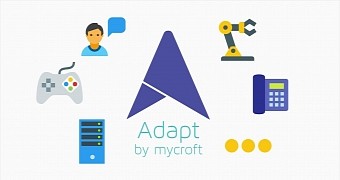The Mycroft team has released the Adapt Intent Parser as open source, which is a piece of code that converts natural language into instructions that can be understood by a machine.
Why is this parser so important? There are at least a couple of reasons why Mycroft chose to release this important piece of code as open source. To make it clearer, the Adapt Intent Parser transforms what the user speaks into something that can be interpreted by an application on a device, like a phone or a desktop.
The Adapt Intent Parser is what makes Mycroft tick and it has been released as open source. This means that it can be used by anyone in other projects, and they can help make it better. The second reason why this is an important release is its being a really lightweight solution, and this will allow developers to integrate it in devices with limited hardware power. In short, you don’t need the power of a desktop computer to run it.
Any AI needs some kind of parser
The Mycroft team didn’t invent this type of technology. You can already talk to your iPhone or Android device, and there are a few speech engines out there that can do a similar job, but the main difference is that they can’t be used by anyone.
“Adapt is lightweight and streamlined and is designed to run on devices with limited computing resources. Adapt takes in natural language and outputs a data structure that includes the intent, a match probability, a tagged list of entities. The software was developed at Mycroft AI by a team led by Sean Fitzgerald, formerly one of the developers of both Siri and Amazon Echo,” developers wrote on the official website.
Adapt is not the only library that will be put to use in Mycroft to determine what that user is really trying to say, but the rest will be coming down the line.
The Adapt Intent Parser is written in Python, which means that it can be used in pretty much anything, and it’s cross-platform, meaning that it runs on Linux, Windows, iOS, and Android. Also, it’s using a GPLv3 license, which allows anyone to make use of it.
The source code is available on GitHub and more details about integration and installation are available on the official website.

 14 DAY TRIAL //
14 DAY TRIAL //